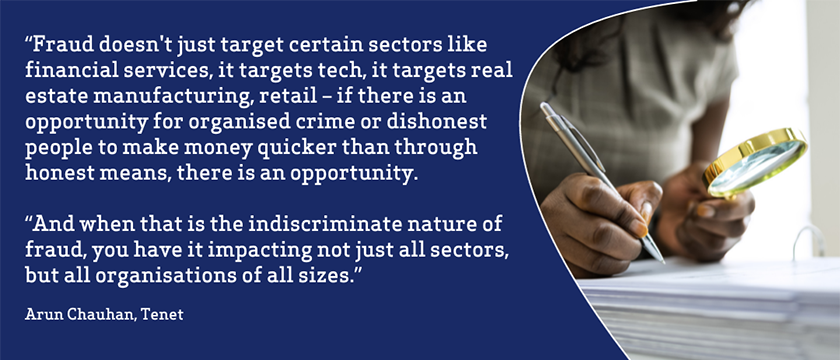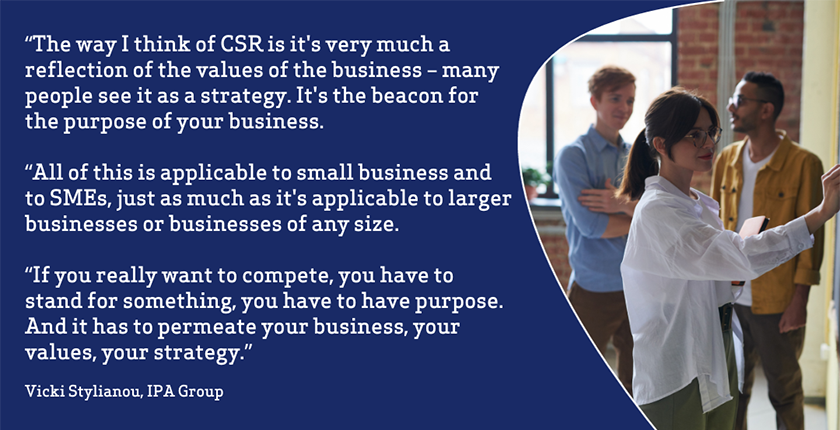Missed the event? The IFA International Conference is available now, on-demand. Find out more.
How to: AML compliance

Recently, the IFA’s Tim Pinkney reminded us of the importance of robust due diligence practices, clear understanding of suspicious activity reporting and stringent AML compliance processes, as well as the importance of bringing professional scepticism to every client interaction. And if you haven’t heard the phrase ‘professional scepticism’, you haven’t spent enough time listening to Pinkney.
In his conference session, AMLCC’s Richard Simms discussed the importance of having the correct anti-money laundering approach, policies and procedures.
Simms provided a step-by-step guide to improving compliance to pass a supervisory or law enforcement visit:
- Choose a senior member of the firm as AML head and money laundering reporting officer (MLRO). “In our practice, I am the MLRO … I'm also the managing director,” Simms said. “Find that person, identify them, make sure the rest of the practice is absolutely clear on who that person is.”
- Train your whole team, including agents: “You and your MLROs, you're responsible for this issue. If your staff aren't trained, they don't report to you what they find, they don't understand what they’re looking out for – that's your problem.”
- Complete a comprehensive and detailed business-wide risk assessment. Simms shared a clear practice around this risk assessment: Understand the specific risks that apply to your industry and the risk associated with the type of work you do. Think about how you then consider your own approach to risk as a business as a practice. If you take a view that you are a risk averse practice, centrally make sure that your policies, controls, procedures reflect your low-risk approach. Finally, share that risk assessment with your whole team so that everyone is educated about the risks and the policies in place.
- Completed a fully tailored AML policies, controls and procedures document: “This is basically your guide to your team about how they’re going to go about dealing with AML for your practice,” Simms said. And although it’s an important document, Simms points out that it is simple to deliver – it simply outlines the steps a team member must take in a given situation, whether that’s a new client walking through the door or forming a suspicion related to AML.
- Complete client due diligence for every client including a risk assessment: “On occasion, you will find clients that raise more concerns for you because they’re not doing things as you expect them to do,” said Simms, explaining that a reasonably standardised or rules-based approach suits 97 per cent of clients, but the ones that throw out the anomalies will require a risk-based approach to understand the risks, verify a person is who they say they are, and so on.
- Keep all of these steps up to date at least annually or as the AML regulations dictate.
- Keep a full and detailed audit trail that can be produced at a moment’s notice. SImms said that records should prove to a third party or regulators that the team has been trained and when, that they passed certification, when risk assessments were updated and why, that steps are not missed in due diligence and AML. “You are in effect delivering an audit trail – a history of your AML steps.”
- Ensured your policies and procedures are being fully adhered to: Simms emphasises the ‘controls’ part of ‘policies, procedures, controls’: “The controls bit is showing that you have checked that the steps you've put in place are actually working,” he says.
- Kept a confidential but comprehensive log of all internal Suspicious Activity Reports.
Tips for employee fraud prevention

Arun Chauhan shared eight actions that people in businesses of all sizes and across all industries can take to mitigate employee fraud:
- Make fraud a frequent agenda item at all levels to set the tone in the team: “If every department talks about fraud once every six months or 12 months, it's going to be really useful.” Chauhan suggested asking team members regularly: In your role, how are we departing from procedure and policy? Can you see where there's a fraud risk in the way you're operating?
- Know the response and processes your business has agreed on for different types of fraud, before you take action.
- Ensure everyone in your team knows where to find guidance and understands the subject.
- Policies and procedures only go so far – your employees are your human firewall. “If they act in line with what you ask of them and understand why you ask them to act that way, they will protect you.”
- Educating employees about fraud is a key aspect of risk mitigation. “If they don't know what fraud is, they don't know what to look for, how to monitor it and how to respond.”
- Internally publicise your actions on combating fraud.
- Get employee buy-in by building policies from the ground up. When employees have a role in developing processes and guidelines, they will have a sense of ownership.
- Whistleblowing channels are useful for preventing and detecting fraud. Chauhan emphasises the importance of team members seeing whistleblowing channels not just as a place to report wrongdoing they have witnessed, but as somewhere to notify of risk.
Concluding, he encouraged attendees to consider the pressures team members would be under that could impact their decision-making – economic and cost of living pressures, the digital age’s speedy communications: “These all drive sharp practice and, on occasions, that sharp practice tips over, teeters, into dishonest practice against many organisations with weak controls.”
How to outsource for profit and growth

Robert Grant shared his insights for effective planning to set up an outsourcing programme for success:
- Identify the long-term benefits from outsourcing work and avoid focusing too much on short-term objectives such as eliminating a backlog or addressing a peak in workload.
- Set clear quality and performance measures to complement internal targets: “Your outsource provider will be subject to the exact same KPI arrangements, and maybe even a bit tighter, to realise the full benefits from that service.”
- Engage with staff at the earliest possible stage, highlighting the positive impact of outsourcing work for their future development and career aspirations. Grant suggests that contracting out repetitive work such as monthly bookkeeping or VAT work can help support the CPD of accountants in the practice, and allow for a richer mix of work within the practice.
- Recognise it will take time and initial investment to integrate the outsource partner to a practice and achieve a successful transition. “It will take some time and some initial investment to integrate an outsource partner to a practice and to achieve a successful transition. So think if you're clear on that, from the outset, you will gain the most from your relationship with your provider.”
- Ensure all internal stakeholders are engaged in the commissioning process, including non-accountants who may be involved in the working relationship. “It's not a closed relationship at all, confined to one part of a practice.”
- Encourage open discussion of any perceived barriers or misconceptions about outsourcing work.
- Assign clear ownership to maintain the relationship with the outsource partner and to manage any issues arising – Grant suggests this is also useful in alleviating staff concerns about outsourcing.
- Take the opportunity to critically review your systems and processes, to maximise efficiency and the impact of the outsourcing investment.
10 ways to make the most of CSR opportunities

Vicki Stylianou, Group Executive, Advocacy and Policy at IPA Group, spoke about one of the greatest growth areas for accountants – advisory work around corporate social responsibility (CSR); environmental, social and governance (ESG); and the United Nations Sustainable Development Goals (SDGs).
“All of these acronyms are important because they feed into advisory work,” Stylianou noted, flagging a growth opportunity in helping clients or employers strategise each, implement strategies and measure against the objectives.
“All of that is part of the advisory work. And it is one of the biggest growth areas for accountants.”
She also offered 10 ways that businesses can take action on CSR, ESG and SDGs, and amplify their impact in collaboration with local communities, charities, client groups and beyond.
- Host or participate in education and awareness events: “There's no reason why, whether you're a small firm or a larger firm, you can't do things like hosting the occasional workshop in your community where you operate, raising awareness of some of the ESG considerations and some of the SDGs, and what you're doing to achieve them.”
- Transparent reporting on ESG impact: “Transparent reporting is another growth area.” Sharing this information openly demonstrates your commitment and may encourage and inspire others.
- Supporting local suppliers: Supports the local economy and reduces the environmental impact of transportation.
- Charitable giving: Consider establishing a CSR fund or programme to contribute financially.
- Make community engagement and ESG principles part of your long-term planning.
- Use your platform to share ESG-related content with your audiences on social media and in other content.
- Collaborate with industry associations and networks, and form local partnerships.
- Implement sustainable business practices
- Consider how your products and services can have positive rather than negative impact, and communicate efforts transparently to the community.
- Encourage employees to participate in volunteer activities within the community.
4 finance challenges AI can help with
Shelsea Adrian from Yooz shared stats around the current uptake of AI for various finance tasks (above), and around current, non-AI assisted finance processes.
- Complexity: “It can take from 22 to 35 days to process a document, and many companies are suffering from late payments due to the lack of visibility that they maybe have throughout the process.”
- Costs of manual processing: “Manual cost can be anywhere between £6 to £13 pounds per document – not even taking into consideration additional archiving costs.”
- Fraud: 71% of companies have detected fraud attempts. “So these risks are really important to think about.”
- Late payments: 31% of invoices are paid late. “This [manual handling] is all leading to additional delays and fees that our companies are trying to avoid.”
The IFA International Conference is available now, on-demand. Find out more.




